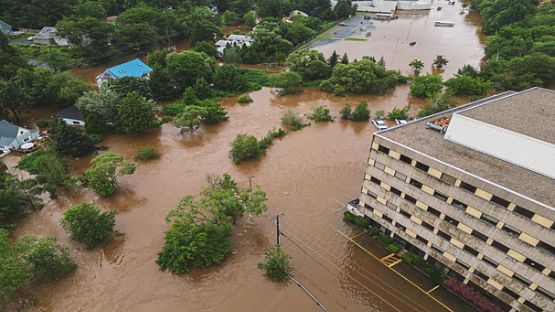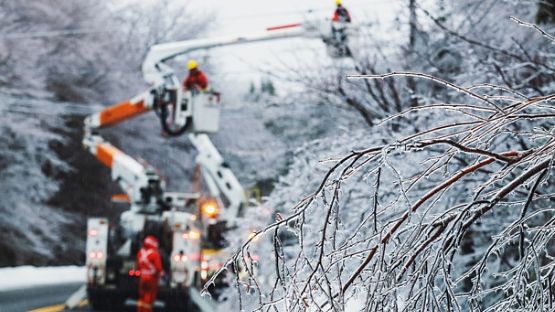The failure to tackle climate change in a meaningful way1 could very well be the greatest risk facing the world over the next decade.
Whether it is global warming, extreme weather events, biodiversity loss, natural disasters or simply the failure to mitigate the historical damage caused by past actions, the risk is real. For the first time ever in Canada, more than 100,000 sq km have burned in wildfires so far this year2, and spread to urban areas. While wildfires have always occurred in Canada, they are more frequent and more intense, making 2023 the worst wildfire season Canada has yet seen. The root cause of this increasing frequency is linked to climate change.
The situation compels governments and organizations to act in a timely and substantive way.
Achieving ‘net zero’ is a key part of addressing this challenge. The Intergovernmental Panel on Climate Change (IPCC)3 confirmed that to limit global warming to 1.5°C (per the Paris Agreement4) the world needs to reduce greenhouse gases (GHG) emissions by 45% by 2030 and be ‘net zero’ in emissions by 2050.
Understanding the three types of climate risk associated with the changing climate
Climate risk largely falls into three broad areas: physical, transition, and liability risk.
Physical risk
Physical risks feed through to an economy in a variety of ways, including damages to physical assets through extreme weather, reduced agricultural productivity, supply chain disruptions, and loss of biodiversity. All of these can have an impact on the economy, to investors, to businesses and in day-to-day life.
The Canadian insurance industry has seen the number of natural disaster claims more than quadruple since 2008 due to natural disasters such as hurricanes, floods, hailstorms, and wildfires. In 2022, such events accounted for $3.1 billion of insured losses, up from $400 million in 2008.5
To address physical risk caused by climate change, exposure management is critical, along with robust mitigation and resiliency measures set up in anticipation of these types of risk scenarios. For long-term strategy and projects in particular, physical risk must be embedded into the risk assessments of any planning and investments.
Transition risk
Transition risks have historically been a focal point in considering the impacts of climate change. These risks result from the relative uncertainty created by the global shift towards a more sustainable, net-zero economy. While it is critical for a net zero future that we transition to a low carbon economy, it comes at a price.
Evolving energy procurement practices, potential carbon taxes, the availability of capital, and even changing consumer preferences are all creating new risks for organizations, which are transition risks.
For instance, an impact of decarbonization related activity is that existing assets in high emission sectors can, and will, lose value. Likewise, these sectors will, if they haven’t already, see reduced access to capital which will, in turn, hamper day-to-day business operations and severely impact any potential growth targets. Per recent reports, half of the world’s fossil fuel assets could become worthless by 2036 in net zero transitioni, making it unattractive for capital allocation.
Tackling the issue of ‘stranded assets’ will be a critical issue for organizations going forward. An example of stranded assets could be fossil fuel resources that cannot be burned and fossil fuel infrastructure (e.g. pipelines, power plants) that is no longer used and may end up as a liability.6
Liability risk
Climate-related litigation is on the rise, posing a major liability risk to organizations. This trend in climate litigation shows no sign of abating. While oil and gas companies have been usually targeted, a number of food and agriculture companies, transport as well as finance sectors have all seen an increase in strategic climate cases since 2020. Some recent examples are the ‘greenwashing’ related lawsuit against H&Mii, the investigation and fines on Goldman Sachs asset management for ESG fundsiii, and the September 2023 climate lawsuit filed by the State of Californiaiv against the five largest oil companies for ‘hiding’ the correlation between fossil fuel production and climate change.
Further, the impact of Director and Officer (D&O) liability7 is also a significant concern. Having the right coverage in place is essential to mitigate the impacts of these types of legal (and related reputational) risks if these individuals are sued as a result of serving as a director or an officer of a business or organization.
Climate disclosure and education to support risk capital decisions
The investment community is looking for better and more qualitative and quantitative information about organizations' exposure to climate risks, how resilient their strategies are, and what adaptation measures they're taking to ensure they can succeed and deliver on their strategy. Hence, companies will need to uphold greater climate disclosure requirements, including reporting on Greenhouse Gas (GHG) emissions, globally to reduce risk and attract investors.
The GHG Protocol Corporate Standard classifies a company’s GHG emissions into three ‘scopes’8:
- Scope 1 emissions - direct emissions from owned or controlled sources.
- Scope 2 emissions - indirect emissions from the generation of purchased energy.
- Scope 3 emissions - indirect emissions (not included in Scope 2) that occur in the value chain of the reporting company, including both upstream and downstream emissions.
Companies should set ambitious targets and report their Scope 1 and 2 emissions. Scope 3 emissions are typically the more complex of the categories to track and report. That’s why mapping supplier and customer emissions is critical to capturing this data and ultimately reducing your emissions. For many businesses, Scope 3 emissions account for more than 70 percent of their carbon footprint.9 For example, for a product manufacturer, there will often be significant carbon emissions from the extraction, manufacturing, and processing of the raw materials.
In March this year, the Office of the Superintendent of Financial Institutions (OSFI) in Canada issued a draft version of Guideline B-15v: Climate Risk Management, which proposed a prudential framework that recognizes the impact of climate change on managing risk. It introduces mandatory climate-related financial disclosures aligned with the Task Force on Climate-Related Financial Disclosures (TCFD) framework for federally regulated financial institutions (FRFIs), including insurance providers and will be effective fiscal year-end 2024.
As businesses plan for the future, they should aim to direct resources to sustainable partners and suppliers to facilitate further emission reductions as well as to have greater access to capital (as capital flows away from high emission sectors and businesses).
Companies build credibility and value by prioritizing and advancing these investor-focused climate decisions, which are responsive to market demand. It is through these related investments and reputational decisions that will drive change. For example, Aviva's overarching Sustainability Ambition, climate work to net zero 2040 and our latest reports.
Opportunities ahead – working towards a better future
With change comes opportunity. As businesses transition to a more sustainable business model, insurers play a strong role in ensuring businesses stay protected, meet their regulatory requirements, and position themselves for success today and tomorrow. As risk profiles evolve, so will markets, technology and insurance solutions.
Furthermore, new investment is flowing into the marketplace as part of this transition. $130 billion (CAD) of investment, every year, is expected as businesses are working to become net zero by 2050.10 Prepared and resilient stakeholders in the value chain stand to gain the most from these opportunities and position themselves for further success and growth as a renewed, sustainable business landscape unfolds.
Looking to protect your large corporate or commercial business from the unexpected?
Aviva’s Global Corporate & Specialty (GCS) division provides innovative and flexible insurance and risk management solutions for large corporate and commercial clients in Canada, and globally. Look to GCS to deliver excellent service that results in sustainable benefit to our clients by providing protection and managing claims with expertise and dedicated support.
Sources
1 Climate Change ‘Biggest Threat Modern Humans Have Ever Faced’, World-Renowned Naturalist Tells Security Council, Calls for Greater Global Cooperation Climate Change ‘Biggest Threat Modern Humans Have Ever Faced’, World-Renowned Naturalist Tells Security Council, Calls for Greater Global Cooperation | UN Press
2 Canada sees 100,000 square kilometres burned this record-breaking wildfire season | CityNews Toronto
3 The evidence is clear: the time for action is now. We can halve emissions by 2030. — IPCC
4 The 1.5 C climate threshold: What it means and why it matters | World Economic Forum (weforum.org)
5 Catastrophic losses in Canada standing at $3.1 billion in 2022, versus $40 million a year in the mid-80s. (See page 15-25 below) https://a-us.storyblok.com/f/1003207/x/09c346cc31/ibc-2022-facts.pdf
7 Climate disclosure rules may have D&O consequences | Business Insurance
8 GHG Protocol FAQ FAQ.pdf (ghgprotocol.org)
9 What are scope 1, 2 and 3 emissions? | Deloitte UK
10 Page 80 of the budget covers it https://www.budget.canada.ca/2022/pdf/budget-2022-en.pdf
i Reframing incentives for climate policy action | Nature Energy
ii H&M Case Shows How Greenwashing Breaks Brand Promise (forbes.com)
iv ft.com/content/3b655443-5721-4524-9e8f-ffbf314b06a7
v Guideline B-15 - Climate Risk Management (osfi-bsif.gc.ca)













